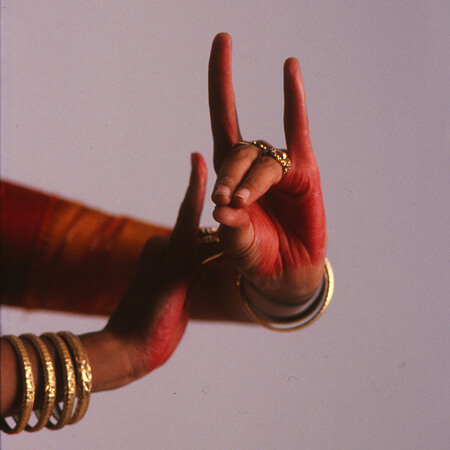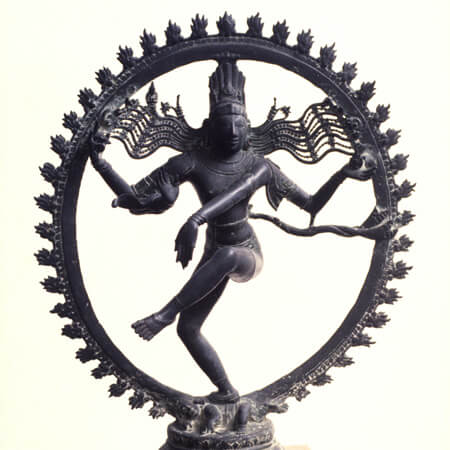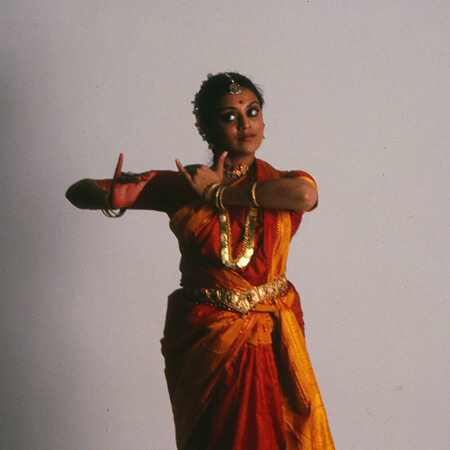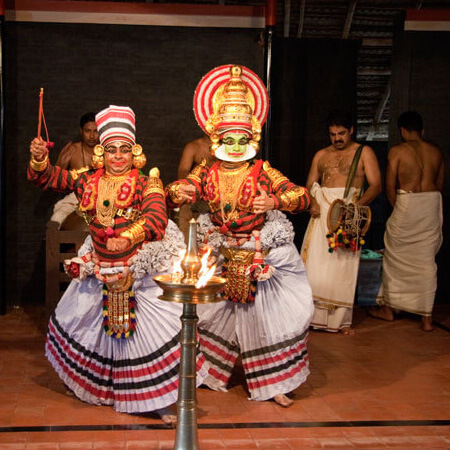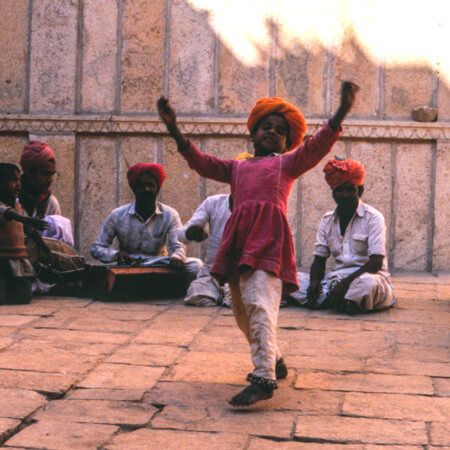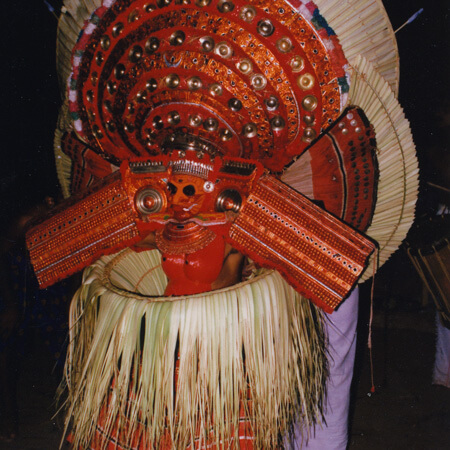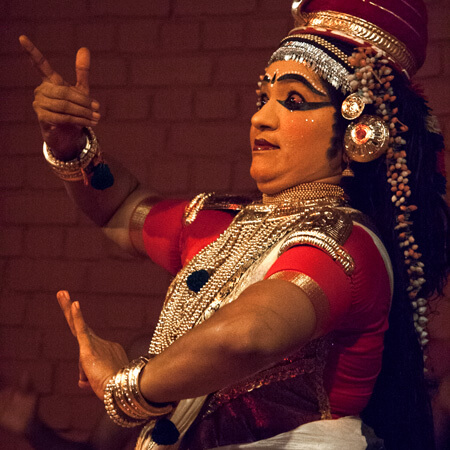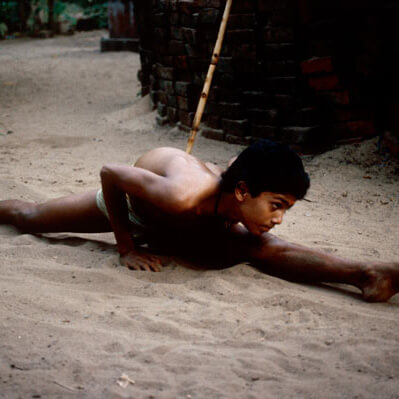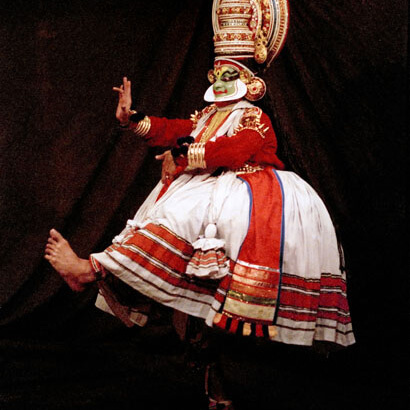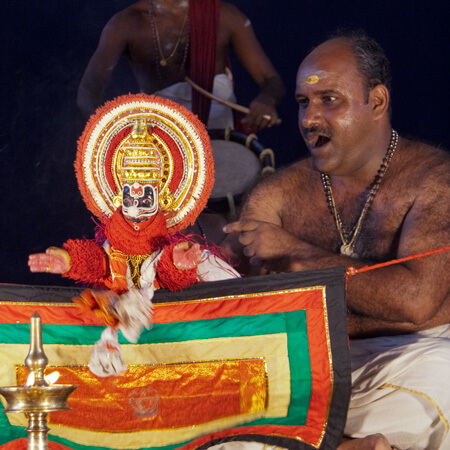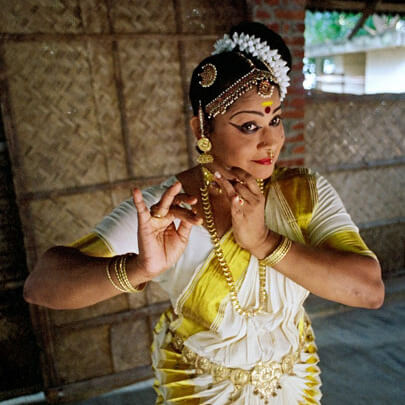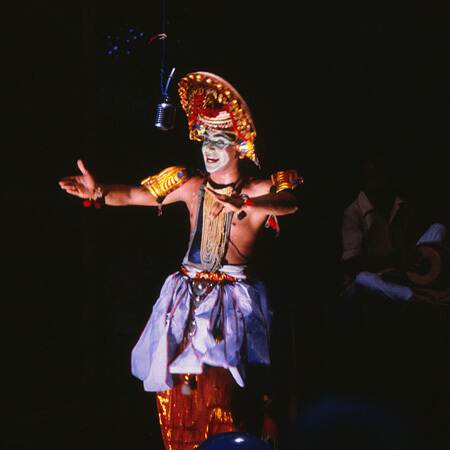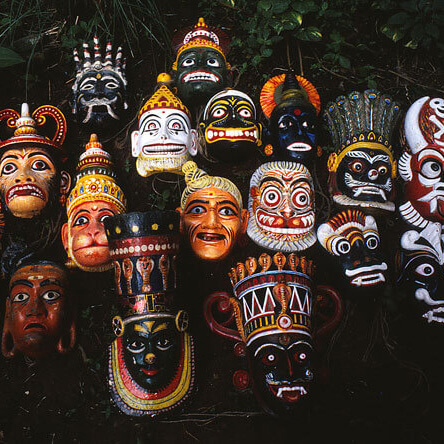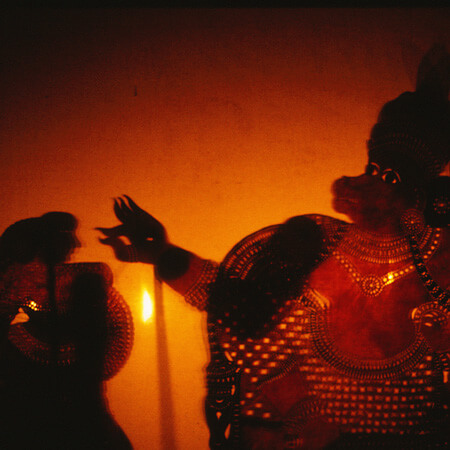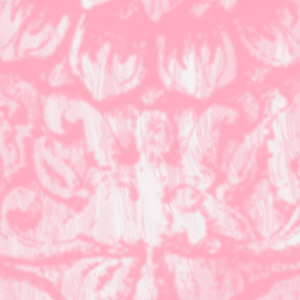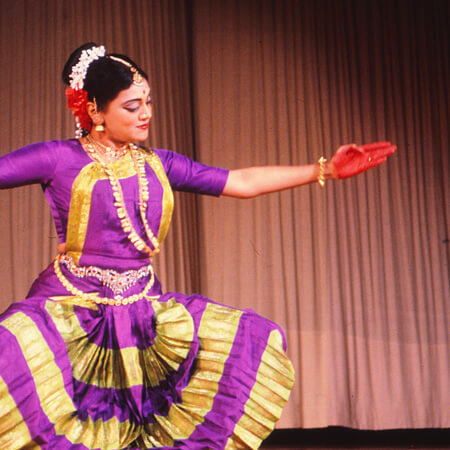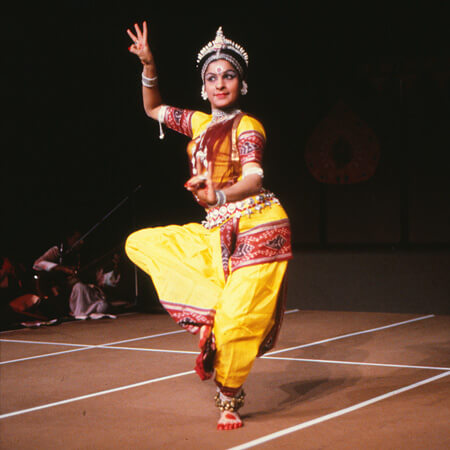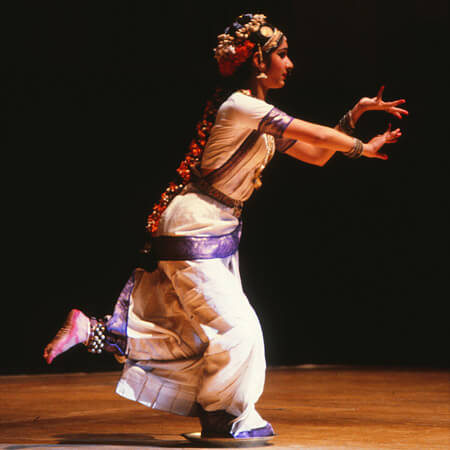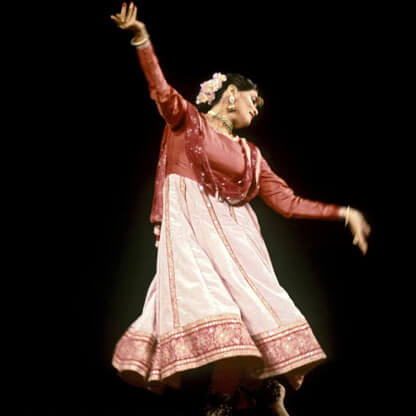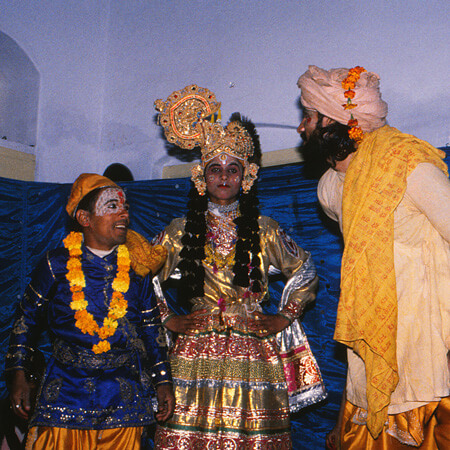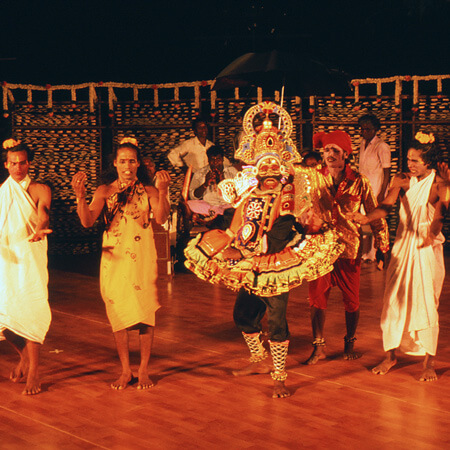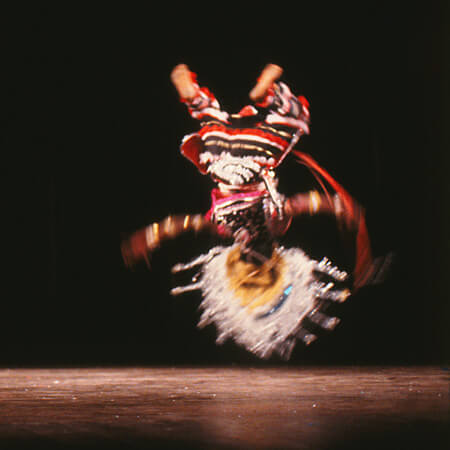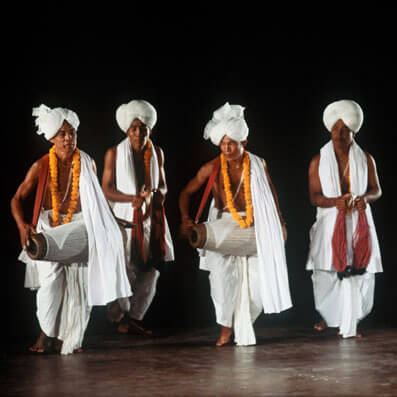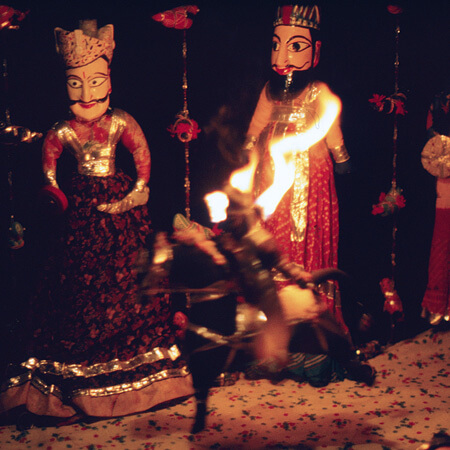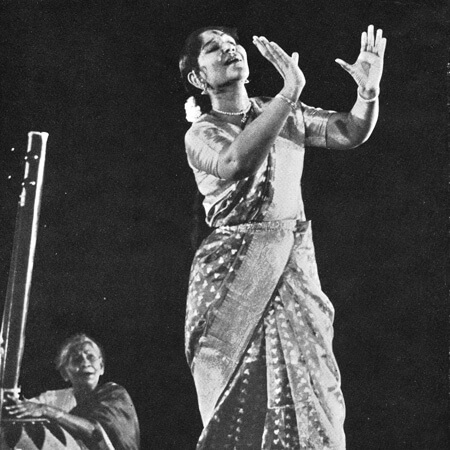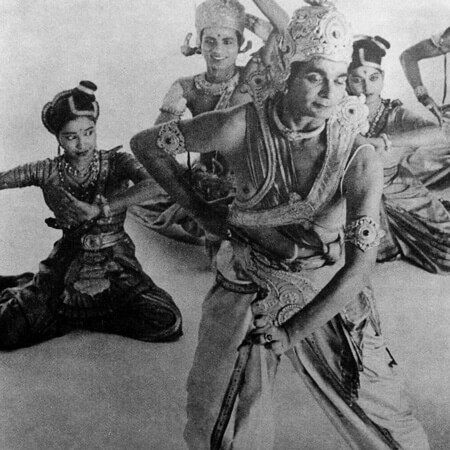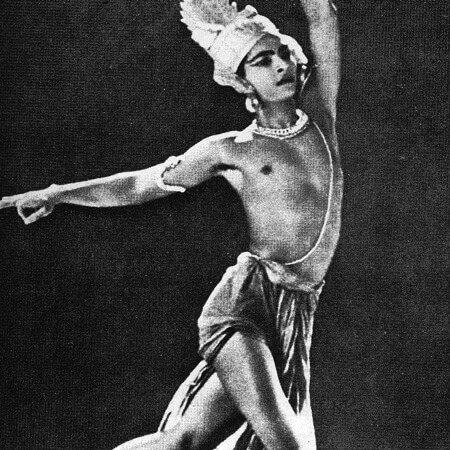This vastly illustrated web-based material is an introduction to Asian theatre and dance traditions. It can be used as a virtual textbook for university students as well as a handbook for general readers. With its search-by-word facility it also serves as an encyclopaedia of names and terms related to the Asian performing arts. Twelve countries […]
Introduction
No “one” Asian tradition of theatre and dance exists; there are at least hundreds of them. Therefore all generalisations about “Eastern” or “Oriental” theatre and dance are usually misleading. However, if we want to compare Asian theatrical traditions with the late 19th to mid 20th century western mainstream tradition, it is possible to find some […]
The Origins of Asian Theatrical Traditions
In Asia, as in many other regions in the world, the origins of theatre and dance can be traced back to several early, archaic types of performance. In Asia they include early religious rituals, ancient movements imitating animals, or so-called animal movements, the martial arts, and the art of storytelling. Later, the complex behaviour codes of […]
Many Approaches
A theatre genre crystallised in classical form is an extremely sensitive and complex whole. It requires the close co-operation of specialists in many forms of art and an unbroken tradition extending over generations. It necessarily reflects the history and ideals of the culture that created it. Theatre has often been called living history, and in […]
Literature
General Asian Puppets: Wall of the World, Los Angeles, 1976. Bowers, Faubion: The Drama in the East: A Survey of Asian Dance and Drama, New York, 1956. Brandon, James R. (ed.) Asian Theatre: A Study Guide and Annotated Bibliography. Theatre Perspectives, No.1, New York, 1979. Brandon, James R.: Brandon’s Guide to Theatre in Asia, Honolulu, […]
Credits
The editor and main writer Doctor of Arts Jukka O. Miettinen Related articles Mr Veli Rosenberg PhD Stefan Kuzay PhD Wolfgang Mey Mr Pertti Seppälä PhD Anna Thuring Professor Ari Tenhula Videos Veli Rosenberg Reijo Lainela Photographs Jukka O. Miettinen Veli Rosenberg Sakari Viika Marja-Leena Heikkilä-Horn Ari Huhtala Kimmo Kahra Tero Kiiskinen Fredrik Lagus Juhani […]
Facts about India
The Indian subcontinent forms a huge cultural sphere and its influence has radiated around almost the whole of Asia. India’s cultural heritage is enormous, and includes archaeological evidence of some 10,000 years, as well a four-thousand-year-old literary tradition. Two Indian religions, Hinduism and Buddhism, as well the sacred language, Sanskrit, cosmology and architectural and other […]
The Historical Outline
The Roots The earliest known permanent settlements in India appeared approx. 9,000 years ago. They gradually developed into one of the earliest pre-urban civilisations in the world, the so-called Indus Valley Civilisation, which flourished in approx. 2700–1800 BC. Its centres were Harappa and Mohenjodaro in the Indus River Valley, in present-day Pakistan. In their ground […]
Early Literature and Theatre
Theatre and dance, which are inseparable art forms in Indian culture, are present even in the earliest works of Indian literature. The Veda literature, or the four Vedas, which forms the basis of early Brahmanism and later Hinduism, mentions dance and open-air theatrical performance. Otherwise, the Vedas mainly include invocations and hymns to the gods, […]
Bharata and his Natyashastra
The myth of the origin of theatre in India, told at the very beginning of the Natyashastra, or the Drama Manual, shows the central role of theatre and dance in Indian culture. Natya, the art of theatre (including dance), was the work of God Brahma, the creator, who was asked to give mankind a fifth […]
Dance in the Visual Arts
Besides the early literature, the visual arts, such as early sculptures, reliefs, and later paintings, also give extremely valuable information about theatre and dance. In India the whole phenomenon of the interrelation of dance and the visual arts, and indeed of other art forms as well, is a most crucial one. The question is not […]
The Drama Proper
As mentioned already earlier, the Natyashastra regards the text as the basis of theatre. How the text is then employed and constructed varies greatly in different styles of theatre. It can be, for example, written as a drama script with dialogue combining prose and verse or it can be recited or sung by singers while […]
Sanskrit Dramas
India also has an old and long-lasting tradition of full-length poetic plays, which are called Sanskrit Dramas because they were written mainly in Sanskrit. In fact, however, they combine both classical Sanskrit with Prakrit or different forms of vernacular languages. The tradition was maintained for nearly 1 200 years, which makes it the longest continuous […]
Present-day Traditions
India is home to hundreds of living theatrical traditions. Some of them are archaic rituals that have been cherished by small rural communities for several centuries, some are age-old classical traditions of dance-drama related to the Natyashastra, the ancient Drama Manual, and some of them are popular forms of folk entertainment reflecting the changing tastes […]
Kerala, Richness of Theatrical Traditions
No other state in India can offer such an abundance of theatrical genres as Kerala. This rather small state is located on the western coast of southern India. Its history is known from approximately 200 BC onwards. Although it has been a crossroads of international maritime trade routes for over some 600 years, it has, […]
Teyyam, an Archaic Form of Ritual Theatre
In Kerala there live side by side very archaic forms of ritual theatre and forms of theatre closely related to classical theatre that clearly belongs to the Natyashastra tradition. One of the earliest forms of theatre found in Kerala is teyyam, a group of annual rituals or “festivals” lasting from one to seven days. Its […]
Kutiyattam, The Only Surviving Form of Sanskrit Drama
Kutiyattam (also Kootiattam, Kootiyattam, Koodiyattam) is an old form of theatre, which until recently has been performed solely in the temple theatres, kootampalas, of Kerala, a state with an exceptionally strong Sanskrit tradition. Kutiyattam (lit. “acting and dancing together”) is traditionally performed by men of the Chakiar caste, and the music is played by men […]
Nangiarkuttu, The Female Branch of Kutiyattam
Nangiarkuttu (also nangiar koothu) is a one-woman type of ritual theatre, originally performed in the temple theatres in Kerala. Just like kutiyattam and kathakali, it concentrates on mimetic abhinaya acting. Traditionally the stories cover the life cycle of the god Krishna. It is performed by Nangiars, women of the Nambiar families, while the accompanying music […]
Krishnanattam, Praise to Lord Krishna
Krishnanattam (Dance of Krishna) developed from the same tradition as kutiyattam at the turn of the 17th century. It is a full-scale form of dance-drama concentrating solely on episodes in God Krishna’s life, from his birth to his ascent into heaven. In its spirit krishnanattam is pure bhakti art as its function is to sing […]
Kalaripayattu, the Body as a Weapon
In India there are many regional forms of martial arts. Some forms of dance and dance-theatre also employ their techniques. This is also the case with kalaripayattu, a tradition of “art of war” known in the regions of Taminadu and Kerala. Kalari indicates a “training centre” while payattu means “practices”. Kalaripayattu was originally a secret […]
Kathakali, Kerala’s Grandiose Dance-Drama
Kathakali (Story Play) is probably the best-known form of Indian dance-drama all over the world. It evolved in the 16th century out of the kutiyattam tradition, and krishnanattam took its energetic footwork from the kalaripayattu martial arts tradition, which has been discussed above. Gradually kathakali’s system of make-up and its costuming reached their present spectacular […]
Pavakathakali, Kathakali as a Puppet Play
Video clip: Pavakathakali performance Veli Rosenberg Pavakathakali is a mini kathakali adapted for glow puppets. It evolved in the 18th century when kathakali became popular in the Palghat region, which already had its own glow puppet tradition. The performers belong to the Telugu-speaking population, although the language of the performances is local Malayalam. Nowadays the […]
Mohiniattam, Mohini’s Dance
Mohiniattam is Kerala’s version of the soft, lasya style dance, performed most often by female dancers. Several regions of India have their own variants of this kind of Natyashastra-related “temple dances”. They were originally performed by the devadasis, or the female temple servants, who were given to the temple to be “married” to the deity […]
Tullal, A Semi-Classical One-Man Show
Tullal (“jumping”) refers to a form of one-man dance-theatre as well as to a literary tradition created for it. The tradition is said to have been invented by an exceptional actor-poet in the early 18th century. Tullal has three subcategories. All of them are characterised by a certain kind of poetry and dynamic performance style. […]
Kummatti, Masked Dance-Processions
Kummatti is a form of processional mask dance from the central parts of Kerala. Kummatti dances belong to the cult of Goddess Devi and different temples have their own variations of the tradition. Kummatti has the quality of a partly improvised, hilarious carnival. Everyone can participate in it since the dances do not require any […]
Tolpavakoothu, The Ramayana of Shadows
Tolpavakoothu (tol, leather; pava, puppet; koothu, play) is a shadow theatre tradition on a grand scale performed for Goddess Devi in the temples of Central Kerala. The performance may take three weeks to be fully executed. The puppets, cut from softened deerskin, are some 20–30 centimetres high, and they are operated behind a wide screen […]
Classical Solo Dances, Bharatanatyam, Kuchipudi, Orissi, and Kathak
As has already been mentioned several times, in India the borderline between “classical” (margi) and “folk/regional” styles (desi) is not always clear. Many traditions discussed in this text evade this simplified categorisation. However, during the 20th century it became established that six and later eight major schools of dance were defined as “classical” styles. The […]
Bharatanatyam, the Solo Dance Style of Tamil Nadu
Bharatanatyam is the famous form of lasya dance practised for centuries in India’s southernmost state, Tamil Nadu. It is often claimed that it is the oldest form of dance still being performed in India. This is emphasised by its present name, given to it in the 1930s, which means “Bharata’s dance”, which refers to the […]
Orissi, Solo Dance Style of Orissa
Orissi (also odissi) is the lasya-style solo dance from the eastern state of Orissa. Like bharatanatyam, its technique stems directly from the ancient Drama Manual, the Natyashastra. However, there are slight differences between these two styles. Where bharatanatyam emphasises symmetry, orissi places more emphasis on curved poses, jumps, as well as hip deflections, which are […]
Kuchipudi, The Dance Style of Andhra Pradesh
Kuchipudi is yet another form of lasya dance related to the above-mentioned bharatanatyam. It derives its name from a village in the state of Andhra Pradesh. Its origins lay in a village dance-drama tradition but in the latter part of the 20th century it gained popularity mainly as a solo form, mostly performed by female […]
Kathak, The Indo-Persian Dance Style
The present form of kathak dance is a fruit of the fusion of indigenous Indian tradition with Islamic culture in the northern parts of India during the golden age of the Moghul dynasty from the 16th century to the beginning of the 18th century. Many of kathak’s elements, such as the poems depicting Hindu mythology […]
Pilgrimage Theatre
Northern India has two great theatrical traditions intended to commemorate the avatars or incarnations of God Vishnu. They are raslila, which enacts the turning points of Lord Krishna’s life, and ramlila, which enacts the events of Prince Rama’s life. Both of them are closely connected to the North Indian bhakti movement. They are both performed […]
Raslila, A Devotional Dance-Opera
Raslila (ras, dance or blissful state; lila, play) is a form of devotional operatic play dedicated to Krishna’s story, particularly to his childhood and amorous youth. It evolved in the regions south of Delhi, in villages and cities related to Krishna’s life. Its main characters, those of Krishna, his beloved one, Radha, and the gopis, […]
Ramlila, Events in Rama’s Life
Ramlila refers to a ritual tradition of religious tableaux or short plays performed in northern India in September and October during the birthday festival of Prince Rama, the hero of the Ramayana epic and an avatar of God Vishnu. The highlights of Rama’s life can be enacted as robust village theatre or as sketchy scenes […]
Folk Theatre
As already mentioned earlier, it is not always easy to draw a clear borderline between folk (desi) and classical (margi) theatre in India. Both branches of theatre adapt stories from the Puranas, the epics Mahabharata and Ramayana, old Sanskrit dramas, and legends. Folk theatre, however, is more flexible in character, and so are modern love […]
Jatra, The Bengali Folk Theatre of East India and Bangladesh
Jatra (to go in procession) is a form of folk theatre popular in Bengal, where it originated, and in the eastern states of Orissa and Bihar as well as in Bangladesh. It is a very living and vivid form of music theatre and draws its plots from several sources, such as Hindu mythology, popular legends, […]
Yakshagana, Gorgeous Dance Opera from Karnataka
Yakshagana (music of the heavenly yakshas) is a colourful form of popular theatre, which combines singing, dancing, energetic dance, and acrobatics. There are three variations of it, and all of them are performed in the southern state of Karnataka. Yakshagana is dominated by battle scenes and thus its dominating rasa or sentiment is the heroic. […]
Therukoothu, The Street Theatre of Tamilnadu
Thertukoothu (street theatre) is, as its name indicates, a popular form of theatre performed in the streets. It is getting rare and it is mainly practised in the poor areas of Chennai (formerly Madras). This operatic form is slightly influenced by the kathakali of Kerala. Therukoothu is, however, performed by amateur actors, who make a […]
Chhau, Dances of Eastern India Derived from Martial Arts
Chhau refers to three types of dance forms performed in the eastern parts of India, in the present states of West Bengal, Jharkhand, and Orissa. The etymology of the term chhau is not clear. Some state that it is derived from a word meaning “a mask” while some say it comes from a word meaning […]
Manipuri Dances, the Isolated Dance Tradition of Northeastern India
Just like the southern state of Kerala, the tiny northeastern state of Manipur also has its own rich theatrical tradition, which preserves both archaic and animistic, as well as later “classical”, forms. While most of Kerala’s genres are firmly related to the classical (margi) Natyashastra-related tradition, the dance-orientated forms of Manipur have evolved in isolation […]
Storytelling and Puppet Theatre
In India, as elsewhere in Asia, there are numerous forms of storytelling and puppet theatre traditions. Now, in the age of movies, TV and digital technology, many of them are in serious danger of extinction. Many of them live mainly in the village context. The storytelling tradition served, at least partly, as the starting point […]
The Arrival of Western Spoken Drama
Very few Asian countries originally had their own indigenous forms of spoken drama. Of course, the storytelling tradition may be regarded as a form of spoken theatre, but besides that most forms of Asian theatre, in India particularly, also involve music as well as dance or, at least, a highly stylised movement technique. Even as […]
The Birth of the Indian Film Industry
It is a well known fact that India’s film industry is the world leader, at least in terms of quantity. In fact, films were shown in Bombay only seven months after the Lumière brothers had founded the first movie theatre in Paris in 1895. From the very beginning the most popular Indian films aimed at […]
Rabindranath Tagore
Ranbindranath Tagore (1861–1941), a poet, philosopher, composer, playwright, and painter, was one of the strong personalities who shaped the cultural life of India at the turn of the 20th century, when the country was struggling for its independence and searching for its identity in the international community. He was born into an influential Bengali Brahman […]
Rukmini Devi, the Revival of Southern Classical Dance
Rukmini Devi (1904–1986), a dancer, choreographer and revivalist, married an Englishman. They were both active in the theosophical movement, which had its headquarters in India. Rukmini Devi was very interested in Western ballet, but after she had had discussions with the period’s most famous Russian ballerina, Anna Pavlova, who was visiting India, she concentrated her […]
Balasarasawati and the Guru Institution
Before the founding of dance and theatre institutions and schools in the early 20th century, the classical music, acting and dance traditions were taught by masters or gurus. The so-called guru-sishya system of education indicates a close personal contact between a master and his pupil. During daily contact the master guides and initiates his student […]
Uday Shankar, the Father of Modern Indian Dance
The person who is honoured to be the “founder of modern dance” in India did not originally have any kind of background in dance. Uday Shankar (1900–77), the older brother of the musician Ravi Shankar, belonged to a Rajasthani family with origins in what is now Bangladesh. He was originally interested in painting. For a […]
Ram Gopal, Indian Dance for Westerners
The man who is regarded as being the first dancer to introduce the West to the “real” Indian dance tradition was Ram Gopal (1917–2003). In fact, his creations were only based on real Indian dance techniques, such as kathakali, bharatanatyam, and kathak, while the dance numbers themselves were mostly his own creations. Nonetheless, Ram Gopal […]
New Trends
As has been seen, the early pioneers of “modern” Indian dance and dance-drama were, to a great extent, busy in adapting the Indian traditions to basically Western stage aesthetics, dominated by the proscenium stage, the stage décor and modern lighting. The old art forms were removed from their originally religious context to that of theatre. […]
Facts about Sri Lanka
Because of its location as one of the crossroads of major sea routes, Sri Lanka has been a strategic link between West Asia and Southeast Asia. It has also been a centre of Buddhism from ancient times as well as a bastion of Hinduism. The Sinhalese community forms the majority of the population. Tamils, who […]





